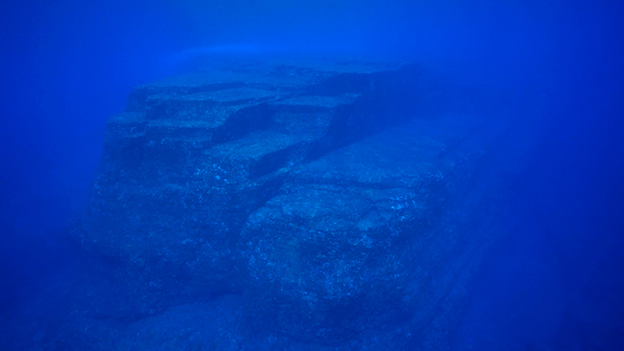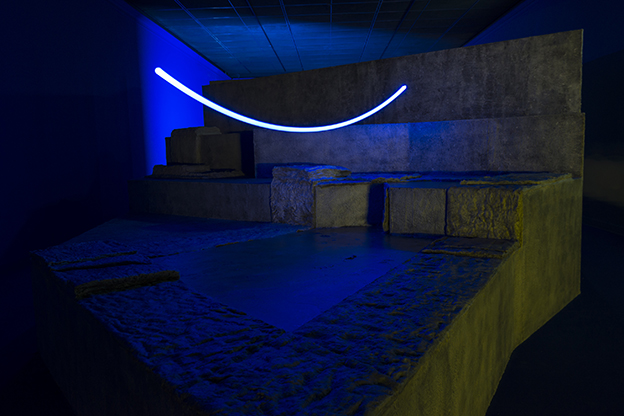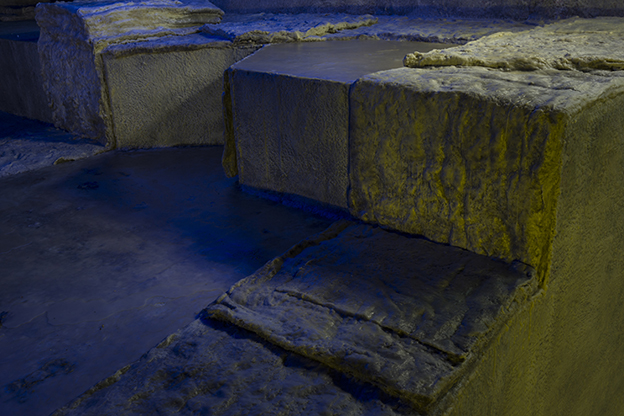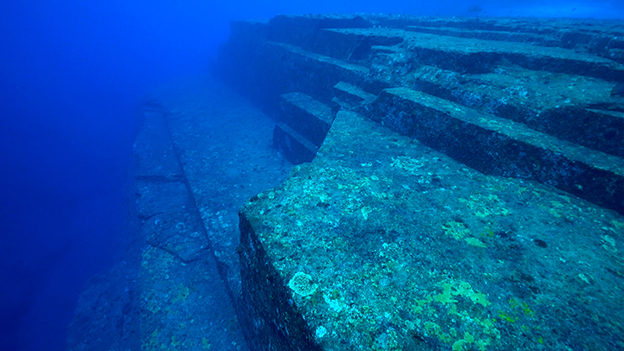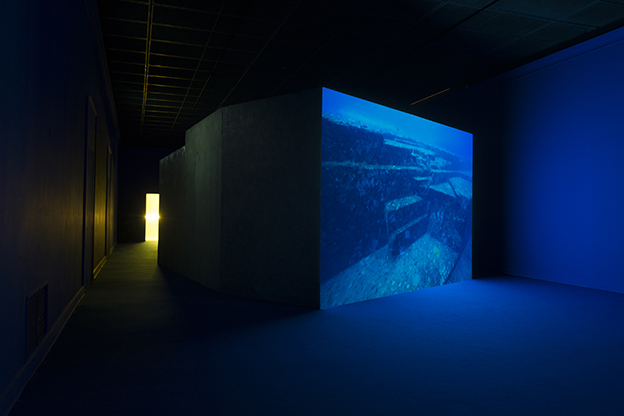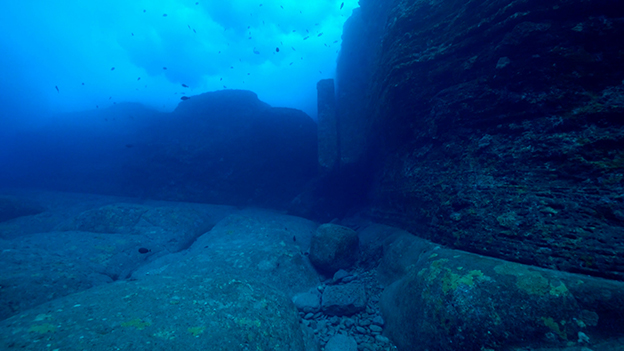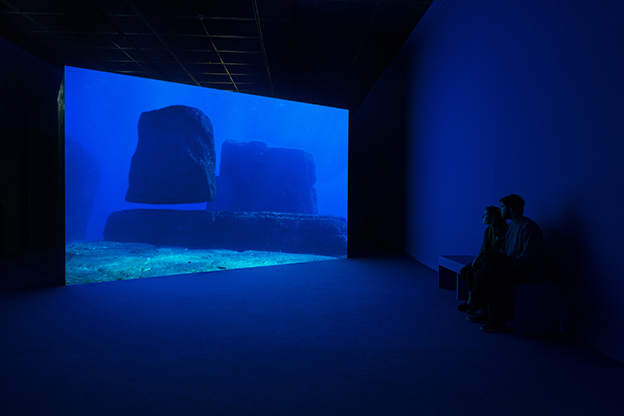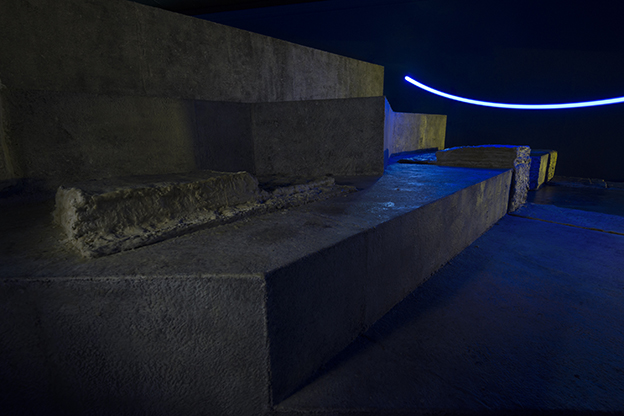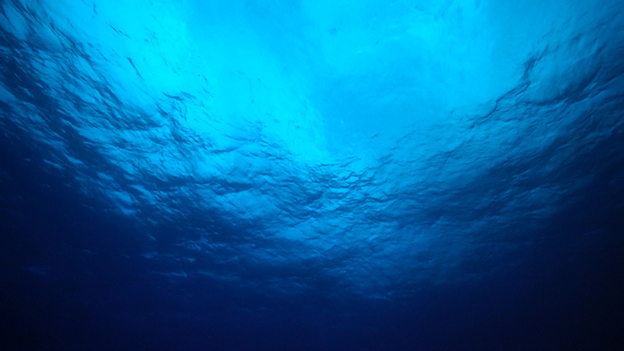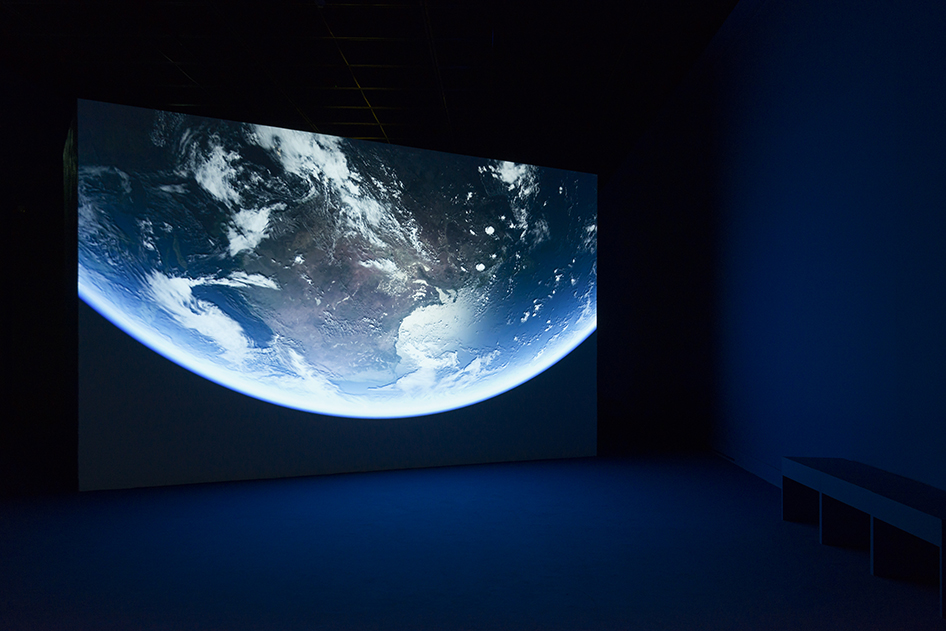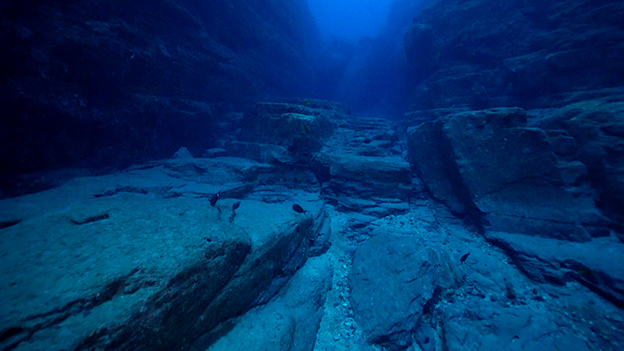Yonaguni Area, 2016
Video installation with music by Simon Ripoll-Hurier
Film, color, sound, 19’47’’ loop, 3D images
A lost continent or the work of human hands? The thesis that the Yonaguni Monument is the work of human hands stimulates the imagination and claims have arisen stating that this is a fragment of a lost continent, the mythical land of Mu. In 1986-7, underwater off the coast of the Japanese Yonaguni Island, a stone building was discovered with a length of 250 m and a height of 25 m, resembling a stepped pyramid. In later studies, smaller objects were uncovered: a stone ring road, a sculpture resembling a human head or a giant turtle. The complex looked like a small town, wherein the stepped pyramid, called the Monument, could have performed the function of a citadel. At least that is how Professor Masaaki Kimura, a physicist at the University of the Ryukyus, interpreted this find. He also claimed that the complex was formed 10 000 years ago, when these areas were not yet flooded by the sea. Another geologist, Robert Schoch, a professor at the University of Boston, after implementing on site testing, challenged the assertion that the object was products of human hands, seeing them as the work of the forces of nature. The controversy has not yet been resolved in the scientific world.
Inspired by the fantasmatic and mythological potential of the Yonaguni Monument, Angelika Markul creates a sculptural installation and video, but not, however, to produce myths and fantasies. That which fascinates her is force (whether human or non-human), which was able to form – carve – the rock in such a way. It is this force that she wants to seize and utilize, to recognize its riddle. The artist treats the Yonaguni Monument as a gigantic sculpture, regardless of whether it was created by a lost civilization or natural factors.
Shows
Naturaleza reimaginada, Muntref – Centro de Arte y Naturaleza, Buenos Aires, Argentina, 2018. Curator: Diana B. Wechsler
What is lost is at the beginning, solo show, CSW Ujadowski Castle, Warsaw, Poland, 2016. Curator: Jaroslaw Lubiak
Collection
Musée d’art moderne de la ville de Paris, Paris, France
